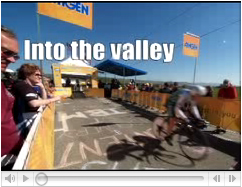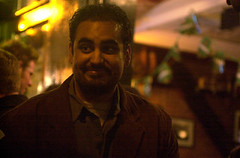During the first week of August I had the distinct pleasure of attending the AEJMC convention held in San Francisco, California this year.
 AEJMC
AEJMC, the Association for Education in Journalism and Mass Communication, is a non-profit organization aimed at J-School educators, administrators, their students and media professionals. Founded in Chicago, Illinois, in 1912, the non-profit has some 3,500 members around the world.
During the five days I served as a photographer for the
AEJMC Reporter, the daily newsletter of J-School educators convention, I spent little time sleeping in my nice hotel room and much time running around between the nice labyrinth of hotel lobbies and the nice production room nicely set up for us about five blocks to the east.
It was pretty nice.
For a couple days myself and 18 other students along with a few advisors worked from the wee hours of the morning, and I mean like 5 a.m. on one occasion, until the darkest hours of the cold night, many of use often didn't hit the pillow until 3 or 4 a.m. One the second night my roommate designer Tim Wickham, University of South Carolina, pulled an all nighter. Our editor can
fill you in on the details.
The convention days were jam packed with lectures, discussions, award presentations, research presentations, social outings (one such visit to an Ad agency opened my eyes to another career path), lunches and swank parties for the educators to attend... and for myself and the staff to cover.
Easy you say? Not quite, just spend a day doing this and you'll quickly realize how hard it is to show the same thing a dozen different ways. Not to sound facetious, but easy. Think again.
I did however find the mock trials interesting to attend, and learned quite a bit about the ethics and principals of our line of work. The one major let down was the discussion of how to teach students to cover disasters, specifically Katrina. What I found lacking was anything said worth saying and instead a lot of self-serving horn tooting. A bit harsh? Not at all, I'm a student, it was a waste of time, that's the honest truth.
Speaking of horn tooting, take a look at
the centerpiece of our multimedia presentation. I shot the pictures while walking around with reporter Shawn Chitnis, University of Southern California, as he recorded interviews and ambient sounds. Shawn then sat down with Phil De La Cruz, San Francisco State University, and recorded some narration for the package. The pieces were all put together and what you see in the link is the end result. I think we made a fine team and
the results speak from themselves.
And we managed to have some fun along the way too, take a look over at fellow photographer and comrade in arms
Joyce Lin's blog for some of the experience. (That's me in the lower right stealing your heart.)
As always, Ryan Sholin was on top of it (whose this guy think he is? ;) and even took it upon himself to
blog on the scene. It's a pretty accurate summary of the goings on.
If that's not enough, here's another link.
Overall it was a rewarding experience. I shot various assignments, served as photo editor for the second issue, discovered BART doesn't run all night, had some adventures. I spent a few days meeting a lot of interesting people, discussing some of the biggest debates in our industry with professors from all over the world (yes, world), debated the future of journalism with the elder statesmen of journalism, learned a few things, had a few laughs and made some new friends along the way.
Make sure to check out some of the articles on the website, there are some very good reads to be found.














